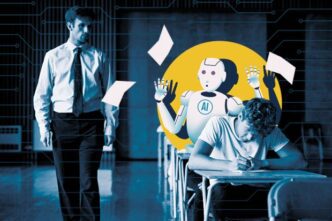Anthropic CEO Dario Amodei is on a mission to crack open the mysterious inner workings of artificial intelligence models—and he’s giving himself just two years to make real progress. In a new essay titled “The Urgency of Interpretability,” Amodei outlines his vision for making AI systems more transparent by 2027.
According to Amodei, today’s AI models remain a black box. We see what they do, but not why they do it. That’s a problem, especially as these systems take on bigger roles in the economy, national security, and everyday life.
He believes AI’s rapid advancement has outpaced our understanding of its decision-making. While performance keeps improving, interpretability lags far behind. Anthropic has made some progress in this area—but Amodei says it’s not enough.
He warns that deploying increasingly autonomous AI without understanding how it works is dangerous. In his words, it’s “basically unacceptable” for humanity to remain in the dark as these systems grow more powerful.
Anthropic is one of the few AI labs prioritizing mechanistic interpretability—a field focused on unraveling how large models actually think. Researchers at Anthropic recently managed to trace how some models determine U.S. city-to-state relationships using specific “circuits.” These circuits, though rare finds so far, are believed to exist in the millions inside modern AI models.
This kind of work is what Amodei hopes to scale. He envisions a future where AI models undergo regular diagnostic checkups—similar to brain scans or MRIs—to uncover hidden flaws. These scans could reveal tendencies to lie, seek power, or exhibit dangerous behavior. According to Amodei, such diagnostic tools might take five to ten years to develop, but they’ll be critical for the safe rollout of next-gen models.
He also referenced a striking quote from Anthropic co-founder Chris Olah: AI models are “grown more than they are built.” It’s a reminder that as researchers continue to scale model intelligence, they often don’t fully understand what’s under the hood.
The gap between capabilities and comprehension is already visible. Amodei pointed to OpenAI’s recent release of the o3 and o4-mini models. While they perform better in some tasks, they also hallucinate more. Even OpenAI can’t explain why.
This uncertainty raises concerns, especially as we inch closer to Artificial General Intelligence (AGI)—or what Amodei calls a “country of geniuses in a data center.” He believes such powerful systems could be just a few years away, but our ability to interpret them is still far behind.
To accelerate interpretability, Anthropic isn’t working alone. The company recently invested in a startup focused solely on this issue. Amodei believes this kind of research won’t just boost safety—it could also become a competitive edge. Businesses may prefer AI systems that can explain themselves.
He also called on peers like OpenAI and Google DeepMind to step up their own interpretability efforts. Amodei even suggested “light-touch” regulation to encourage transparency—like requiring companies to publish safety practices. In the same breath, he urged the U.S. to place export restrictions on AI chips bound for China to prevent a runaway global AI race.
Anthropic has long been the outlier when it comes to AI safety. While other companies opposed California’s AI safety bill, SB 1047, Anthropic offered cautious support and constructive feedback. Now, it wants to shift the entire industry’s focus—from simply building stronger models to deeply understanding them.
As the AI arms race continues, Anthropic is drawing a line: smarter isn’t safer—unless we know how the system thinks.













